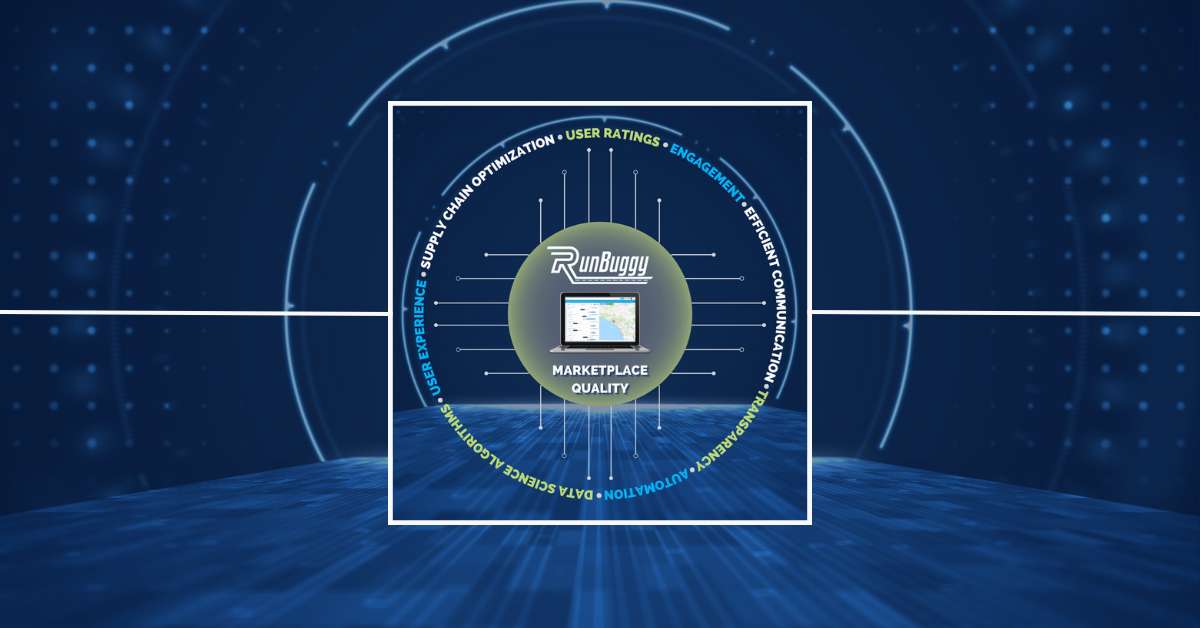One of the most important features of the RunBuggy digital marketplace is the quality of service supported by our network of transporters and engagement from our shippers. Quality participation of both shippers and transporters ensures a good user experience for everyone and allows RunBuggy to ship cars quicker and at a lower cost. Lower costs are afforded because, when used properly, the RunBuggy system uses technology and automation to facilitate fast payments, accurate ETA’s, quality inspections, and efficient communication between all relevant parties. In detail, the technology includes:
- a mobile app – for transporter inspection and status updates,
- a web interface – customized interface for individuals, businesses, transport companies, or the enterprise,
- a secure portal that can be shared with third parties (more info here).
Maintaining quality across a network of thousands of shippers and transporters is a large task that involves automation, hard work by our operations teams, user ratings and other data driven user experience scores. This combination of technology and customer service is required to solve the supply chain problem within automotive transportation.
Best in class operations teams
Our operations team has multiple groups that focus on transporter engagement. Our blue team onboards new transporters and makes sure they have valid paperwork, insurance, and approval from the FMCSA. The team also provides training materials and troubleshooting for any drivers or dispatchers that need help to use the system. Our research shows that once a transporter uses the app a few times in a month, their app usage is nearly perfect. When drivers use the app, operations support is mostly not needed at all. However, when the app is not used, our customer service teams facilitate communication between the transporter and shipper so that the process moves more smoothly. Manual intervention for all orders is not possible as the RunBuggy transportation network is very large and supports all move types from home delivery/pickups, individual consumer moves, dealer and auction moves, repo lot pickups, fleet logistics, and a white glove experience for home to home deliveries and premium vehicles. We therefore use automation and technology to reduce friction and allow operations to focus on the more pivotal customer needs.
How we use data to help transporters
Data drives our technology and good engagement across the RunBuggy network. We evaluate transporters using several user ratings scores to measure proper app usage, transparency of location for inspections and to provide better ETA’s, inspection quality, and to avoid behaviors that lead to bad user experiences. For example, behaviors such as excessive un-claiming of orders, hoarding too many orders, and cancelations due to poor delivery performance impacts shipper and customer satisfaction. In contrast, proper app usage results in a frictionless process with immediate transporter payout and no time-consuming manual conversations, such as to validate vehicle drop-off. Furthermore, a transporter will benefit from app usage by gaining access to route planning suggestions (more info here) and truck utilization algorithms (more info here). In general, app usage allows RunBuggy to deliver cars more efficiently (more info here) and enables more competitive pricing and transporter payouts.
User ratings drive efficiency in our software and operations
We also use data to inform and prioritize activities for the operations teams. During order sourcing, we combine multiple metrics into a weighting function so operations can focus on the most difficult and important orders first. We also created user ratings to help match a driver to the service level and order type. For example, only the best transporters may be assigned to white glove orders and we prioritize drivers with transparent location and ETA’s for home delivery/pickups. B2B moves with gold service levels will be matched with drivers that move vehicles fastest. The remaining drivers may end up with a more standard service level, which pay out less. In other words, our user ratings system informs financial incentives that match different sides of the market with their expectations, like most airlines do with standard, business class, etc. Other examples of data driven operations tasks include training drivers with low app usage ratings, optical character recognition to validate transporter documents, and suggestions for pricing/payouts.
How we use data to help shippers
In some cases, data can indicate if shipper engagement needs to be improved as well. If orders are placed into the market too early or with incomplete and inaccurate information, then delivery times suffer, our operations teams expend much energy to validate orders, and oftentimes transporters waste time driving to pick up locations with no financial benefit. In some cases, the RunBuggy team can compensate drivers for their time spent, however the best solution for everyone is to avoid these empty miles in the first place. Our sales and training teams support conversations with shippers to minimize issues that lead to frustration for all parties involved. For example, a new RunBuggy feature is “on hold” functionality to schedule deliveries in the future.
Conclusions
In summary, data transparency and technology facilitate quality experiences for shippers, transporters, consumers, and minimize RunBuggy overhead. Transparent data has allowed efficiency and user satisfaction in many areas including dining (Yelp), short term rentals (AirBnB), and transportation (Uber/Lyft). RunBuggy aims to enable similar quality experiences for consumers, businesses, and the enterprise by optimizing the supply chain for automotive transportation.



